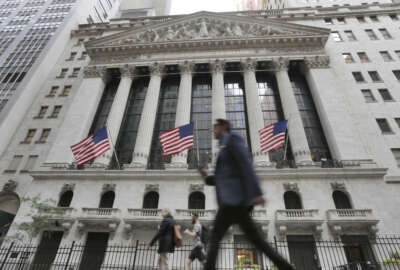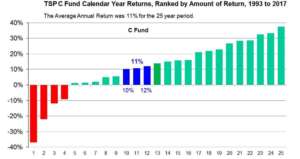
Middle class? Yes, but average? No way: Your TSP portfolio profile
Averages are tricky, especially when investing. Thrift Savings Plan investors who go by average returns must look backward. But how do you do it, and how helpful...
Because most Americans are democrats with a small “D” we claim to be “middle class” even if we make big bucks, live in a mansion and routinely take enviable vacations. On the other hand, if you call us or especially our children, “average,” those are fighting words.
Averages are tricky, especially when you are trying to make or keep money through investing. Thrift Savings Plan investors who go by average returns must look backward. But how do you do it, and how helpful are averages?
When it comes to the TSP, financial planner Arthur Stein says the issue is “What averages don’t tell you.” Why? Because the stock funds in the TSP don’t have many so-called “average” years, he says.
Averages, on average, don’t happen very often.
“The typical ways to view TSP returns is to look at the total return over a certain time period — annually, quarterly, year to date — or the average annual return over a number of years,” he said.
| TSP Percentage Returns (Dec. 31, 2017) | ||||||
| Type | Date | G Fund — Bonds | F Fund — Bonds | C Fund — Stocks | S Fund — Stocks | I Fund — International Stocks |
| Total Return | 2017 | 2.3% | 3.8% | 21.8% | 18.2% | 25.4% |
| Average Annual Returns | 5-Year | 2.1% | 2.5% | 15.9% | 14.8% | 8.1% |
| 10-Year | 2.4% | 4.3% | 8.6% | 9.4% | 2.2% | |
| Past performance is no guarantee of future performance. Source: TSP.gov | ||||||
“That is a logical way to view the data but it makes it hard to discern patterns,” Stein said. “A good alternative is to rank the returns by size.” Here are 25 years of TSP returns and their sizes:

Stein said patterns are easier to spot when returns are ranked by size. For instance, over the last 25 calendar years, the C Fund declined for an entire calendar year in only four years. Only two years had negative returns greater than -20 percent, but positive returns greater than 20 percent were present in nine years.
The average annual return for the C Fund was 11 percent, but returns were close to the average of 10-12 percent in only three years. Meanwhile, the returns for all the other years were much higher or lower.
| TSP C Fund calendar returns, ranked by amount of return (1997-2017) | ||
| Ranking | Year | C Fund returns |
| 1 | 2008 | -37% |
| 2 | 2002 | -22% |
| 3 | 2001 | -12% |
| 4 | 2000 | -9% |
| 5 | 1994 | 1% |
| 6 | 2015 | 1% |
| 7 | 2011 | 2% |
| 8 | 2005 | 5% |
| 9 | 2007 | 6% |
| 10 | 1993 | 10% |
| 11 | 2004 | 11% |
| 12 | 2016 | 12% |
| 13 | 2014 | 14% |
| 14 | 2010 | 15% |
| 15 | 2006 | 16% |
| 16 | 2012 | 16% |
| 17 | 1999 | 21% |
| 18 | 2017 | 22% |
| 19 | 1996 | 23% |
| 20 | 2009 | 27% |
| 21 | 1998 | 28% |
| 22 | 2003 | 29% |
| 23 | 2013 | 32% |
| 24 | 1997 | 33% |
| 25 | 1995 | 37% |
What does it mean for investors?
“Historically, the C Fund compensated investors for the additional risk of stocks,” Stein said. “Past performance is no guarantee of future performance. We don’t know what will happen in the future. But past patterns seem clearer.”
That is excellent advice, especially since many experts say the stock market is long overdue for a major correction of 20 percent or more. Art Stein is my guest on today’s prerecorded Your Turn radio show at 10 a.m. EDT at www.federalnewsradio.com or 1500 AM in the D.C. area.
Nearly Useless Factoid
By Amelia Brust
Although Ray Bradbury titled his classic novel after the point at which book paper autoignites into flames, 451 degrees Fahrenheit is not an proven measure. Different experiments on various books and paper types have found other autoignition temperatures
Sources: Slate.com
Copyright © 2025 Federal News Network. All rights reserved. This website is not intended for users located within the European Economic Area.
Mike Causey is senior correspondent for Federal News Network and writes his daily Federal Report column on federal employees’ pay, benefits and retirement.
Follow @mcauseyWFED
Related Stories





